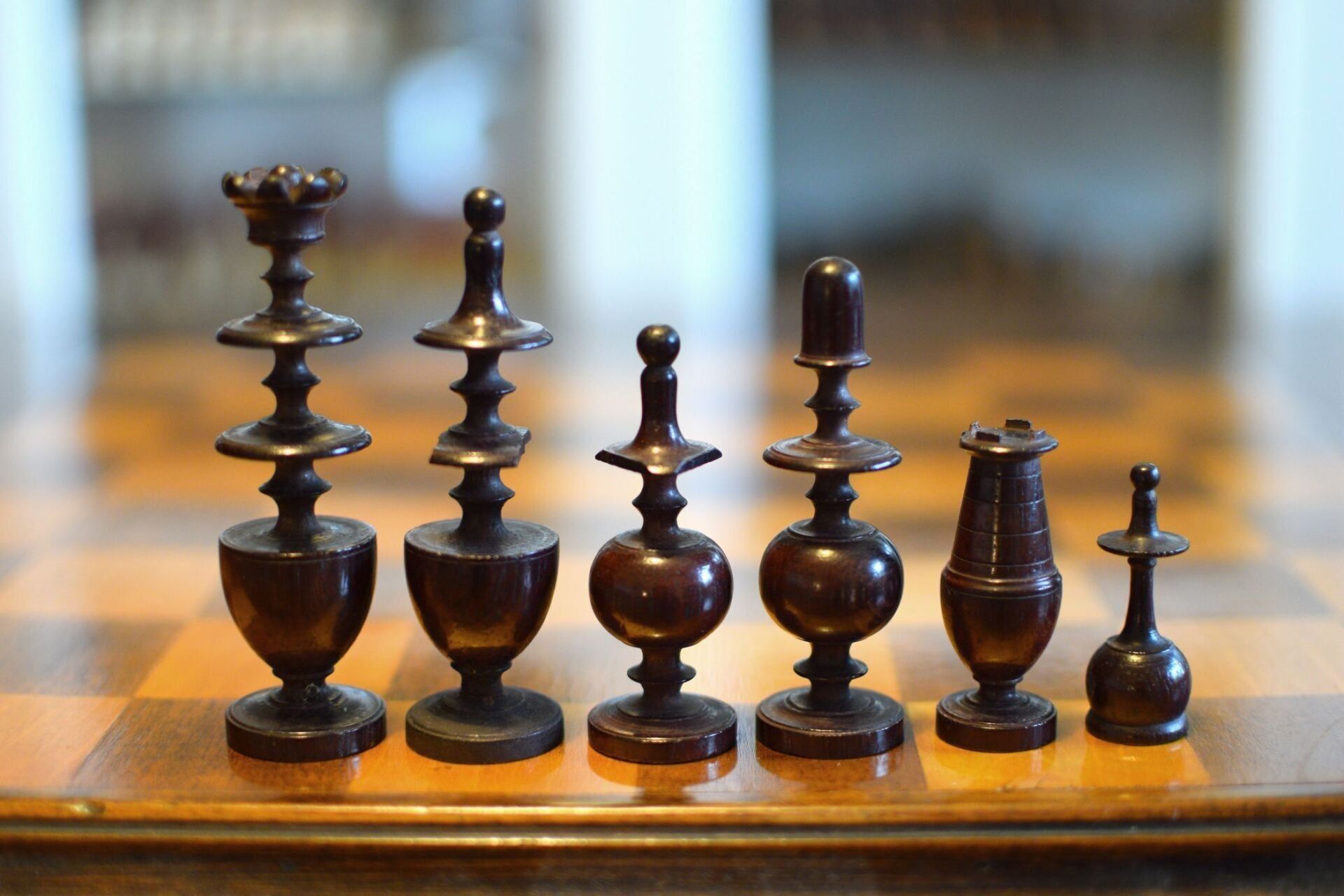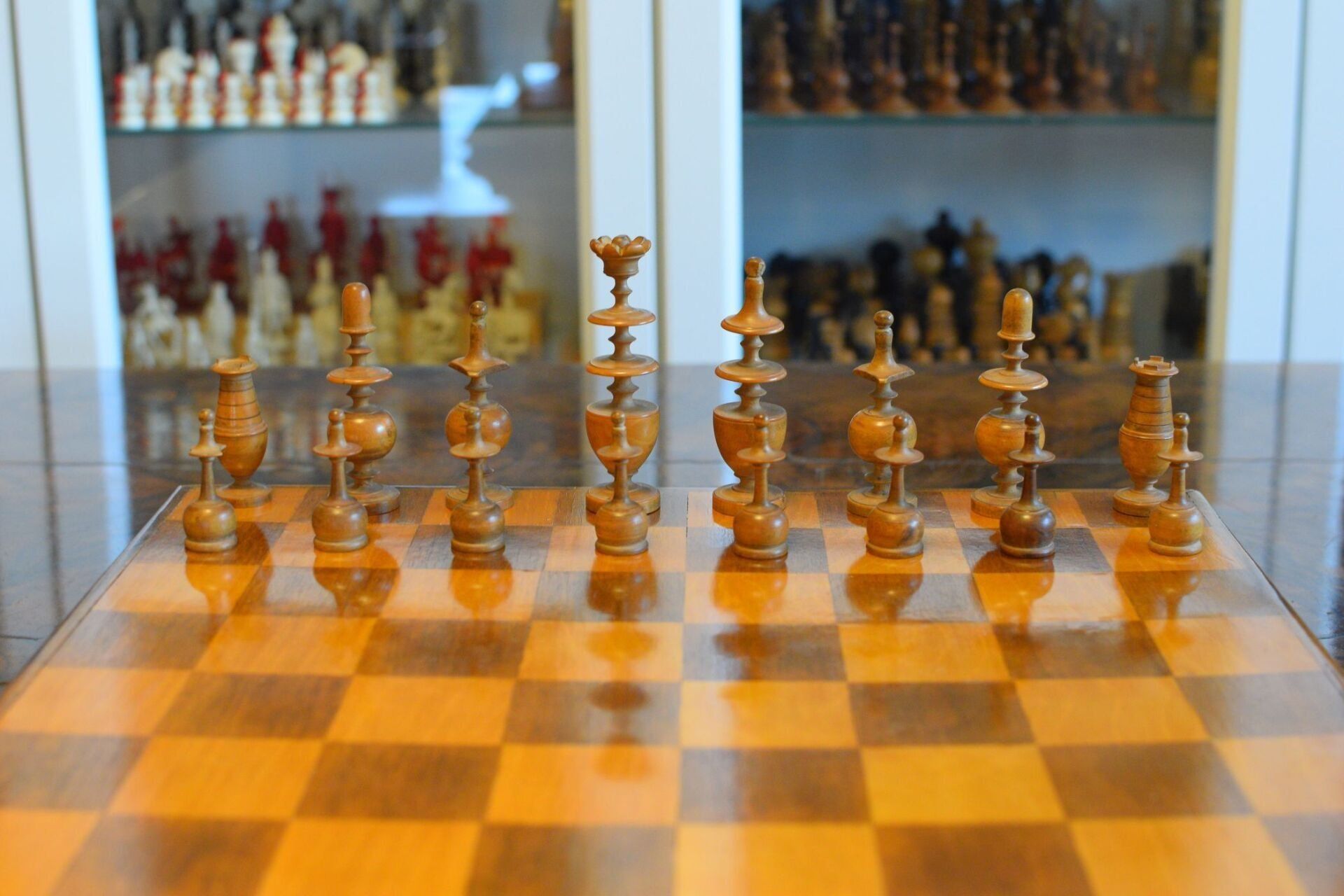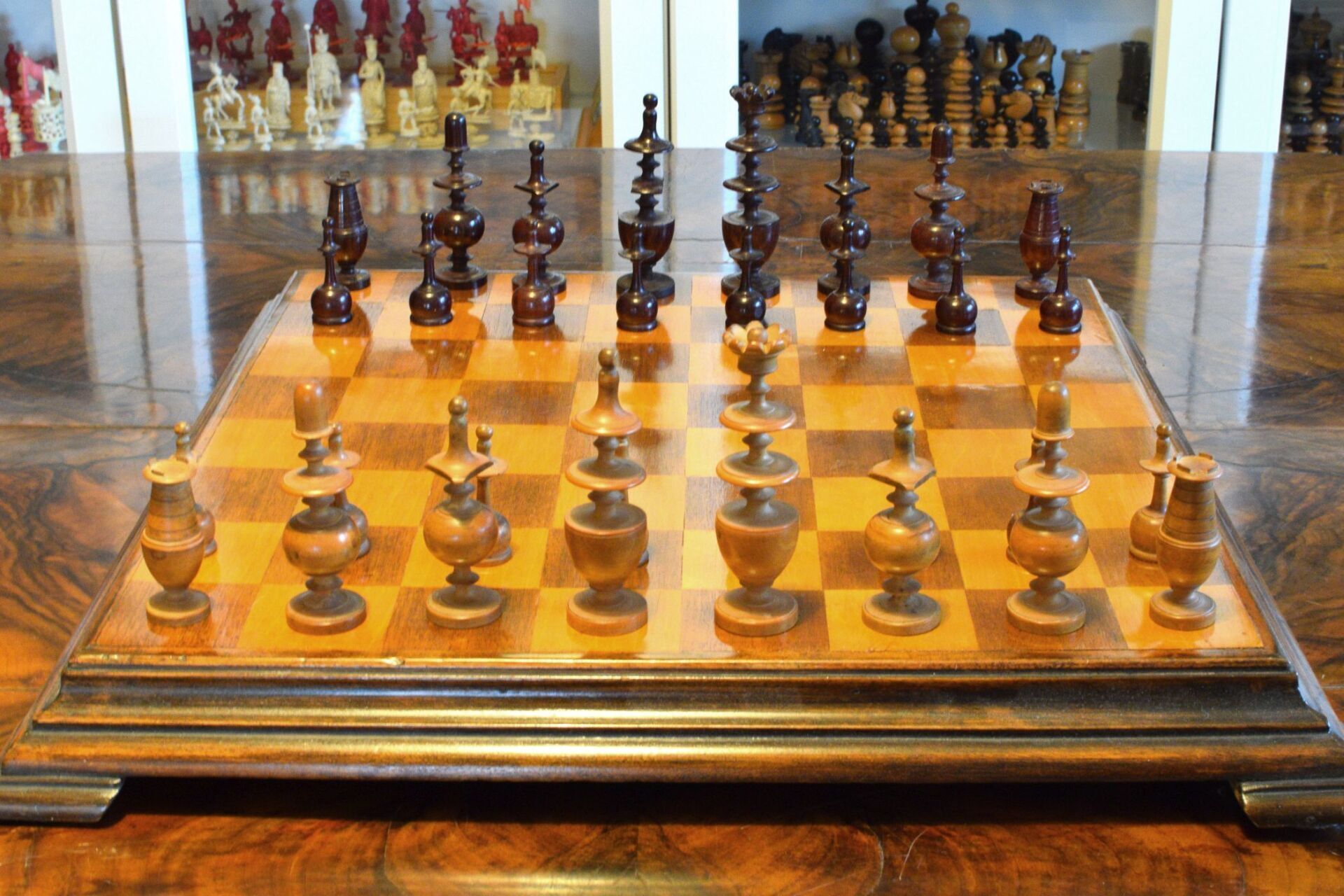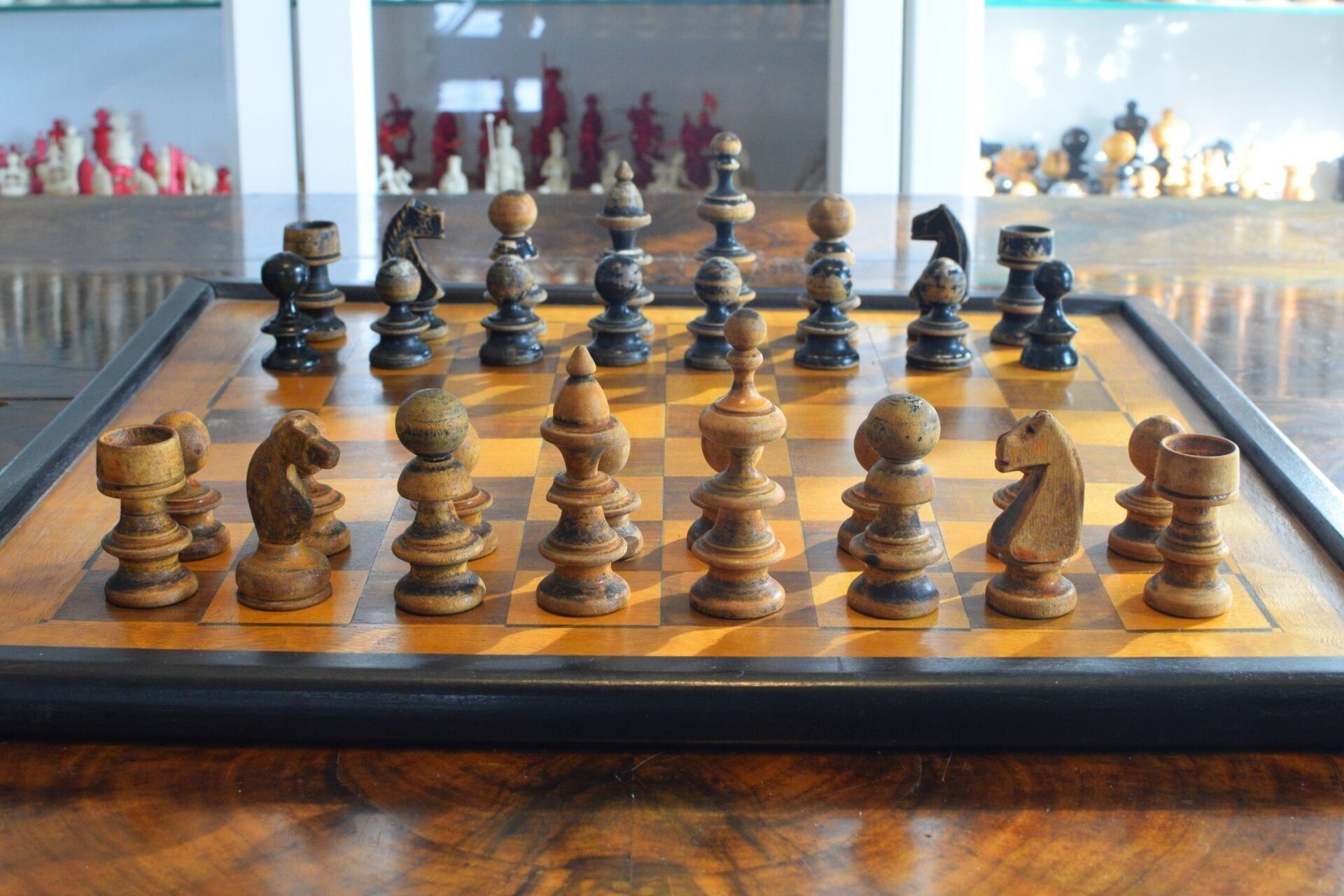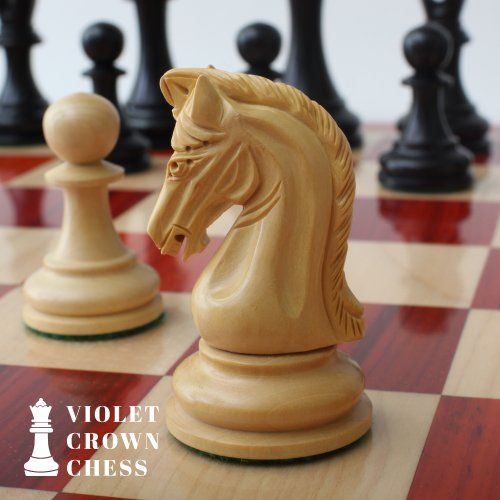French Directoire Chess Set, 1826
Here is a chess set of a renowned provenance. These chessmen belonged to the Gareth Williams collection. In fact, the exact same set is shown on pages 38/39 of Williams' famous book "Master Pieces". There has been a certain discussion about the distinction between chess sets in the Régence style and those in the Directoire style. In his book, Williams labels this set a Régence set. However, in his excellent article "Régence or Directoire" by Jim Joannou in The Chess Collector Magazine, Vol. XXIX No. 2 2020, p. 9 et seq. Jim gives some good reasons to regard this set as a Directoire set rather than a Régence set. According to Jim Joannou the distinguishing feature of a Régence set is the knight, which must be taller than the bishop and must have a horse's head, while the knight in a Directoire set must be taller than the bishop, but be of abstract design. The latter is the case here, because instead of the horse's head the knight here has some kind of cap shaped head. Apart from that, the overall design is similar to the late 18th / early 19th century Régence sets with tulip crowned kings, bishops with triangular collars and pawns with slim shafts on rounded bases. The pieces are turned from boxwood and rosewood. King size is 90 mm.
Without any further evidence, I would have probably dated this set late 18th century. However, the set came in a box with a sliding lid, which is inscribed with black ink. The inscription is not entirely legible, but from what I can read, it says "L'Institution des [...] et les [...]" and below "à Paris 20 Mai 1826". Assuming that the box is original to the set and was not added later, the set therefore dates to the early 19th century rather than the late 18th century.
The set is not only famous because it is shown in Gareth Williams' book, but also because it is featured on a stamp of the Republic of the Congo. You can easily see that it the very same set shown there because of the damage to the black queen's collar.



